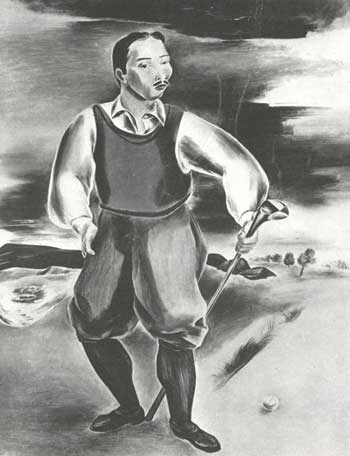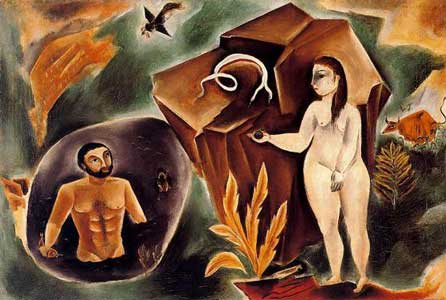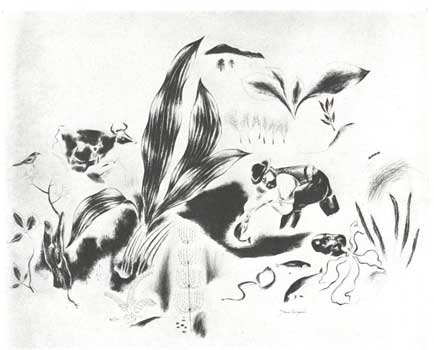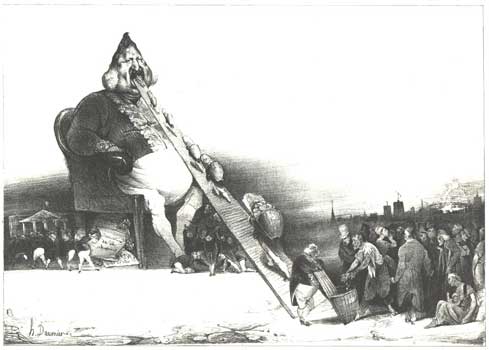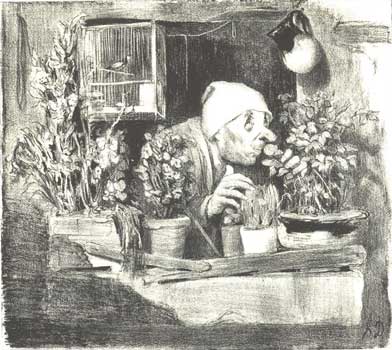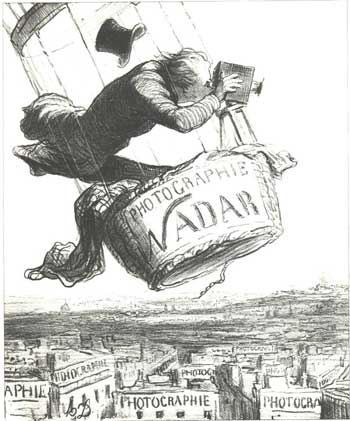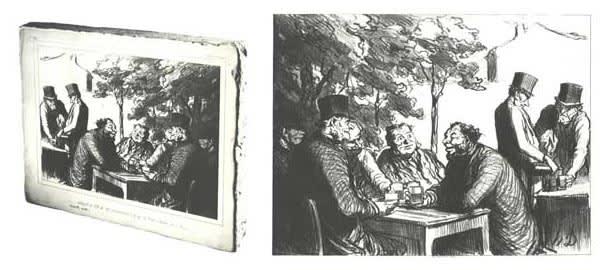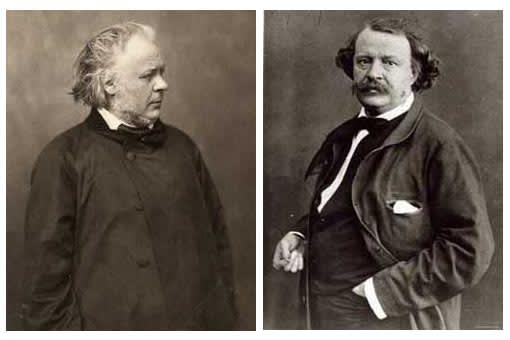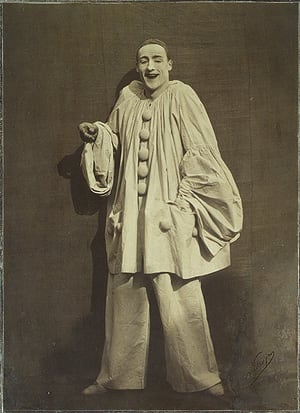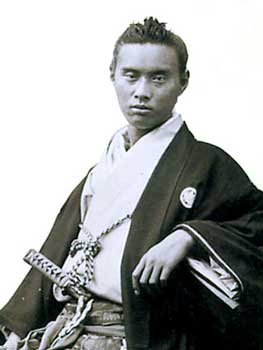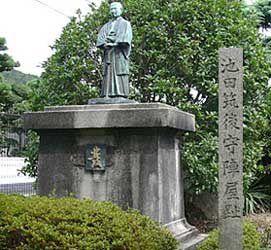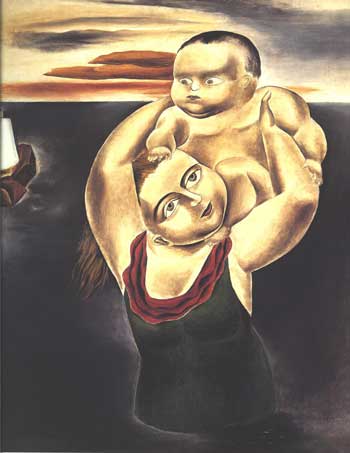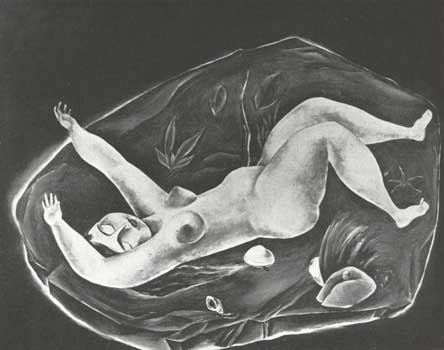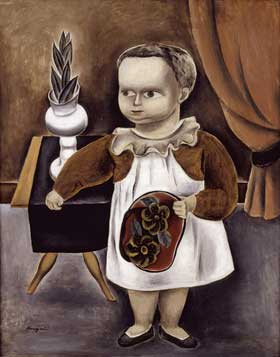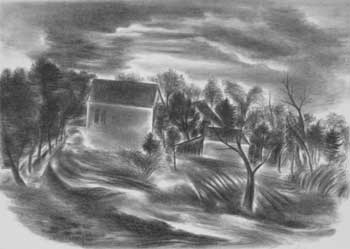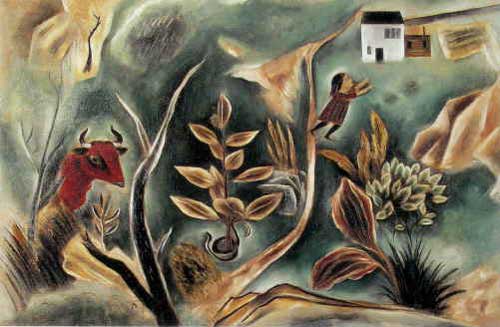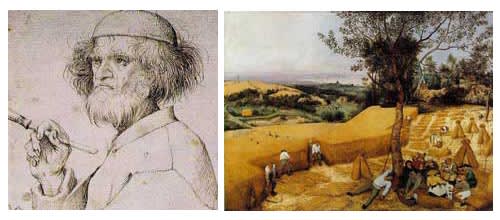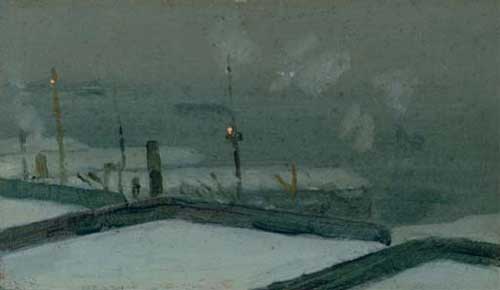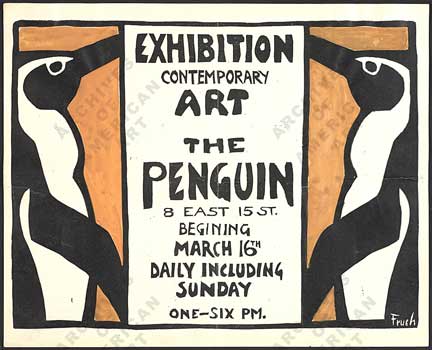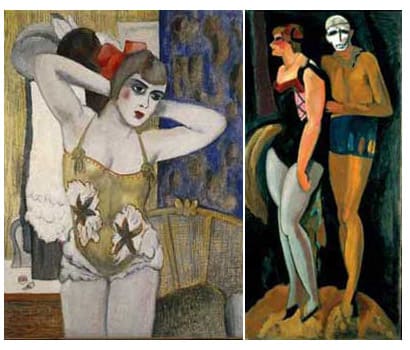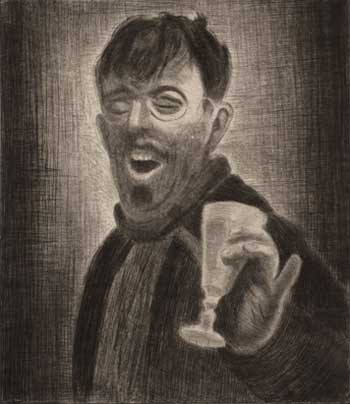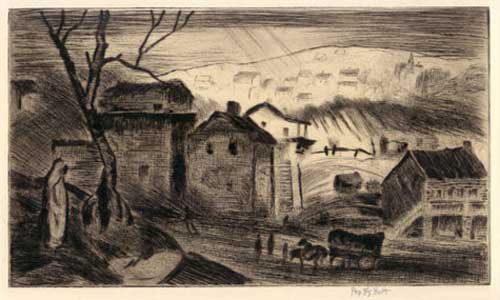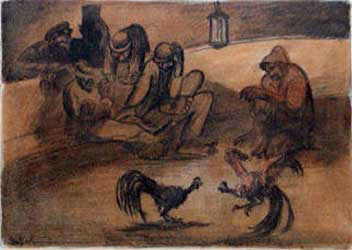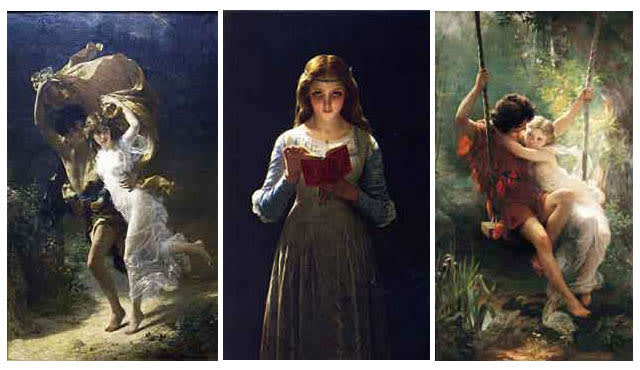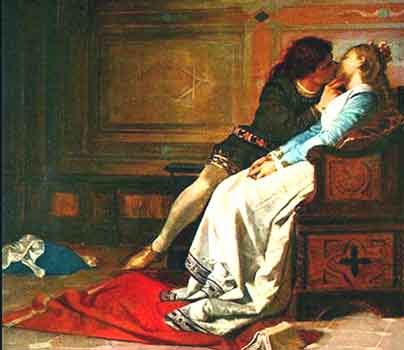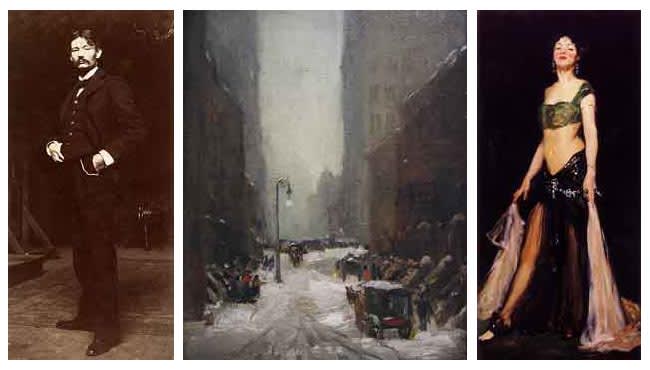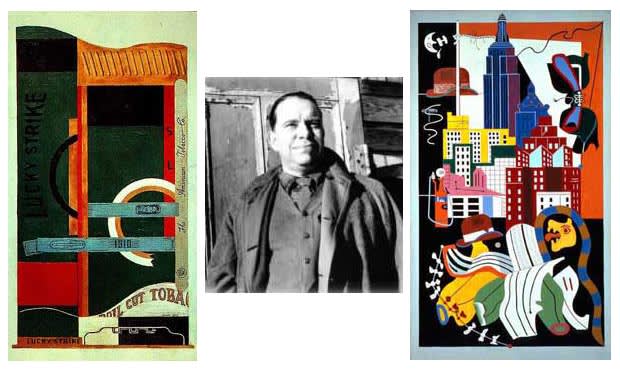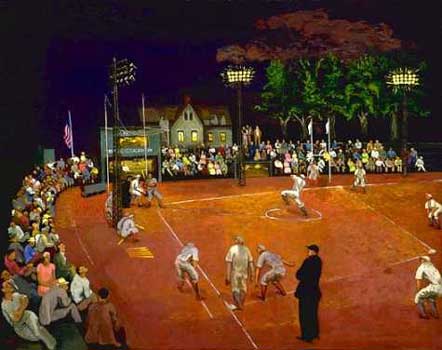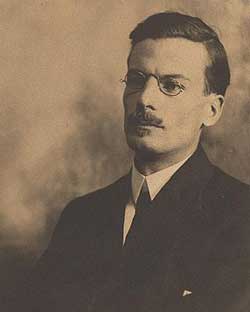全ての彼の世代と同じ様にクニヨシは、より冒険的な若い画家達に現代主義的哲学が受け入れられた時期に、芸術的自覚意識に達しました。 彼の東洋的作風は、西洋の自然主義の拒絶を一部とし、非ヨーロッパ的芸術のより抽象的本質の達成に向かっていた、現代主義と完全に共存出来ました。 クニヨシ自身は、しかしながら、決して純粋な抽象作品には挑みませんでした。
特定の主題・事物が常に彼にとって不可欠な物でありました。
彼の初期の作品は、ドランの様に彼が敬服している特定の現代主義の作家からの影響を明らかにしていますが、その派生物の意図はありませんでした。 相反して、彼自身のシンボルや形体を創作し、高度に個人的表現でした。 この25年をふり返って見ると、現代主義運動の中で最もオリジナルな作品の中にあることが見て取れます。
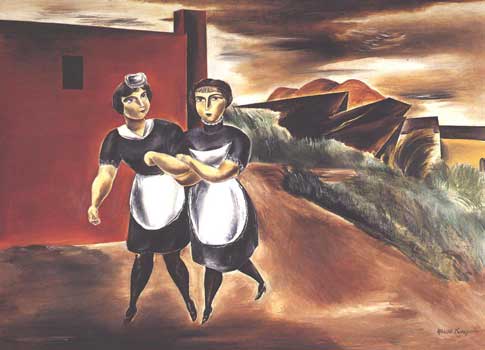
"Waitresses from Sparhawk" 1924-25. Oil on Canvas. (29 x 41 inches)
Archer M. Huntington Art Gallery, The University of Texas at Austin.
Gift of Mari and James A. Michener, 1991
Like all his generation Kuniyoshi came to artistic consciousness at a time
when the modernist philosophy was accepted by the more adventurous younger
painters. His Orientalism was entirely compatible with modernism, which was in
part a rejection of Western naturalism, a reaching out towards the more abstract
quality of non-European art. Kuniyoshi himself, however, never attempted pure
abstraction. Specific subject-matter has always been essential to him. While his
early work revealed the influence of certain modernists whom he admired, such
as Derain, it was in no sense derivative. On the contrary it was a highly personal
expression, inventing its own symbols and forms. Looking back twenty-five
years, one can see that it was among the most original products of the modern
movement.

André Derain. (June 10, 1880 Chatou - Sept.8, 1954), Co-founder of Fauvism
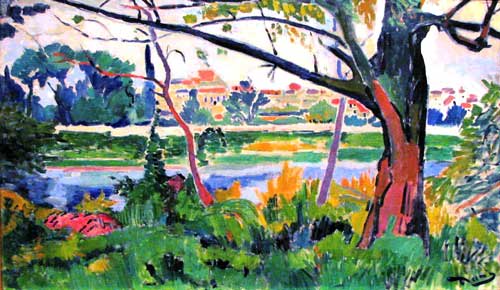
"The Seine at Chatou". 1906. Oil on Canvas. (74 x 123.8cm), S. Paley Collection.

"Portrait of Girl in Black" 1913. Hermitage Museum, Saint Petersburg.
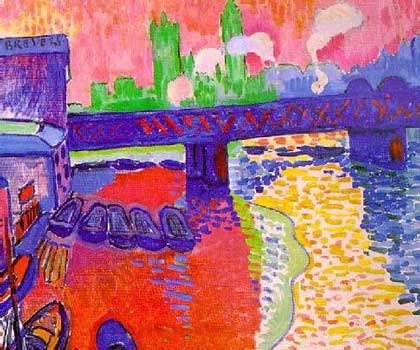
"Charing Cross Bridge" London 1905~06. Oil on Canvas. (81.7 x 100.7cm)
Gift of Mr. and Mrs. David Rockefeller.
特定の主題・事物が常に彼にとって不可欠な物でありました。
彼の初期の作品は、ドランの様に彼が敬服している特定の現代主義の作家からの影響を明らかにしていますが、その派生物の意図はありませんでした。 相反して、彼自身のシンボルや形体を創作し、高度に個人的表現でした。 この25年をふり返って見ると、現代主義運動の中で最もオリジナルな作品の中にあることが見て取れます。

"Waitresses from Sparhawk" 1924-25. Oil on Canvas. (29 x 41 inches)
Archer M. Huntington Art Gallery, The University of Texas at Austin.
Gift of Mari and James A. Michener, 1991
Like all his generation Kuniyoshi came to artistic consciousness at a time
when the modernist philosophy was accepted by the more adventurous younger
painters. His Orientalism was entirely compatible with modernism, which was in
part a rejection of Western naturalism, a reaching out towards the more abstract
quality of non-European art. Kuniyoshi himself, however, never attempted pure
abstraction. Specific subject-matter has always been essential to him. While his
early work revealed the influence of certain modernists whom he admired, such
as Derain, it was in no sense derivative. On the contrary it was a highly personal
expression, inventing its own symbols and forms. Looking back twenty-five
years, one can see that it was among the most original products of the modern
movement.

André Derain. (June 10, 1880 Chatou - Sept.8, 1954), Co-founder of Fauvism

"The Seine at Chatou". 1906. Oil on Canvas. (74 x 123.8cm), S. Paley Collection.

"Portrait of Girl in Black" 1913. Hermitage Museum, Saint Petersburg.

"Charing Cross Bridge" London 1905~06. Oil on Canvas. (81.7 x 100.7cm)
Gift of Mr. and Mrs. David Rockefeller.











